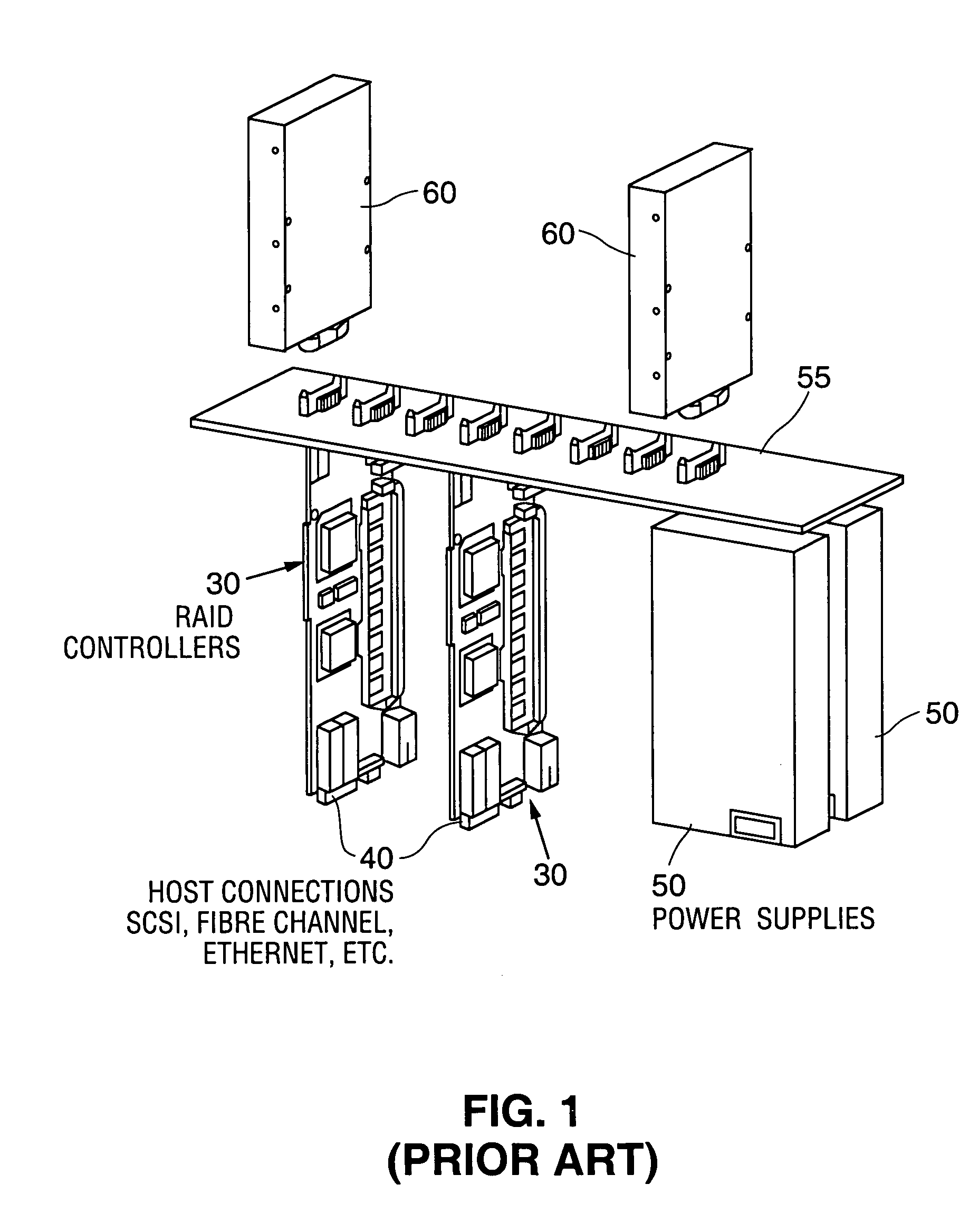Apparatus for removably securing storage components in an enclosure
a technology for removable securing and storage components, which is applied in the direction of electrical apparatus casings/cabinets/drawers, instruments, cabinets, etc., can solve the problems of data loss, inability to tolerate, and associated scsi and fibre channel storage components are four to six times more expensive than the traditional ide (integrated device electronics) storage components
- Summary
- Abstract
- Description
- Claims
- Application Information
AI Technical Summary
Benefits of technology
Problems solved by technology
Method used
Image
Examples
Embodiment Construction
[0043] With reference to FIGS. 4, 5, and 6, we describe a SATA cable (190) that can be coupled to a typical SATA storage component that has been (or is to be) secured in an enclosure in accordance with a class of embodiments of the present invention. To manufacture SATA cable 190, flanges 210 and 220 are attached in the positions shown to a conventional SATA cable comprising all other elements (all elements other than flanges 210 and 220) shown in FIGS. 4-6. Restraining flange 220 is sized and shaped so that it can pass through opening 110 of chassis 100 (if tilted sufficiently), so that flanges 220 and 210 (respectively) rest adjacent to the interior and exterior sides of the wall defining opening 110, and so that cable 190 cannot easily be tilted to allow flange 220 to pass back out through opening 110. The opening 110 is sized to have smaller height than do flanges 210 and 220 but greater height than the rest of cable 190. As a result, the flanges 210 and 220 loosely hold connect...
PUM
 Login to View More
Login to View More Abstract
Description
Claims
Application Information
 Login to View More
Login to View More - R&D
- Intellectual Property
- Life Sciences
- Materials
- Tech Scout
- Unparalleled Data Quality
- Higher Quality Content
- 60% Fewer Hallucinations
Browse by: Latest US Patents, China's latest patents, Technical Efficacy Thesaurus, Application Domain, Technology Topic, Popular Technical Reports.
© 2025 PatSnap. All rights reserved.Legal|Privacy policy|Modern Slavery Act Transparency Statement|Sitemap|About US| Contact US: help@patsnap.com



